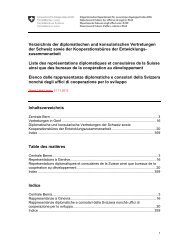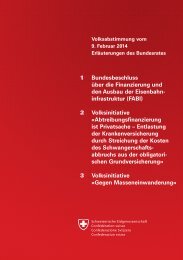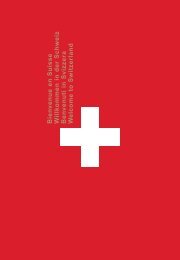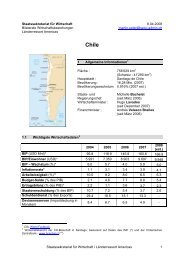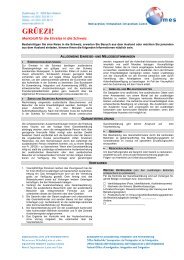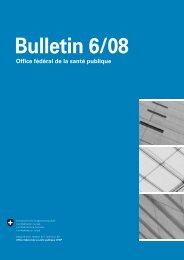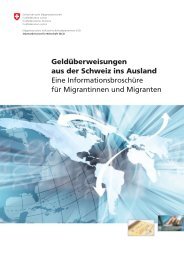SwissInfo
SwissInfo
SwissInfo
Create successful ePaper yourself
Turn your PDF publications into a flip-book with our unique Google optimized e-Paper software.
CONSOLIDATED FINANCIALSTATEMENTS<br />
BarryCallebaut<br />
Annual Report2010/11<br />
Borrowing costs<br />
Borrowing costs related to the acquisition, construction, or production of aqualifying asset<br />
arecapitalized in accordance with IAS23.Aqualifying asset is an asset that necessarily takes<br />
asubstantial period of time to get ready for its intended use or sale.<br />
Leased assets<br />
Leases are classified as finance leases whenever the terms of the lease transfer substantially<br />
all the risks and rewards of ownership to the lessee.<br />
Assets held under finance leases arestated as assets of the Group at the lower of their<br />
fair value and the present value of the minimum lease payments at inception of the lease,less<br />
accumulated depreciation and impairment losses.The corresponding liability to the lessor is<br />
included in the balance sheet as a finance lease obligation. Finance costs are charged to the<br />
income statement over the term of the relevant lease so as to produce aconstant periodic<br />
interest charge on the remaining balance of the obligations for each accounting period. Leases<br />
where asignificant portion of the risks and rewards of ownership are retained by the lessor<br />
areclassified as operating leases.Rentals payable under an operating lease arecharged to the<br />
income statement on astraight-line basis over the term of the lease.<br />
Financial liabilities<br />
Financial liabilities are initially recognized at fair value, net of transaction costs, when the<br />
Group becomes aparty to the contractual provisions.They aresubsequently carried at amortized<br />
cost using the effective interest rate method. A financial liability is removed from the<br />
balance sheet when the obligation is discharged, cancelled, or expires.<br />
Provisions<br />
Provisions arerecognized when the Group has apresent legal or constructive obligation as a<br />
result of past events and it is probable that an outflow of resources will be required to settle<br />
the obligation, and areliable estimate thereof can be made. Provisions are recorded for<br />
identifiable claims and restructuring costs. Restructuring provisions mainly comprise<br />
employee termination payments. Specific provisions for restructuring costs are recorded at<br />
such time as the management approves the decision to restructure and aformal plan for<br />
restructuring is communicated.<br />
Employeebenefit obligations/Post-employmentbenefits<br />
The liabilities of the Group arising from defined benefit obligations and the related current<br />
service costs are determined on an actuarial basis using the projected unit credit method.<br />
Actuarial gains and losses are recognized in the income statement over the remaining<br />
working lives of the employees to the extent that their cumulative amount exceeds 10% of<br />
the greater of the present value of the obligation and of the fair value of plan assets.<br />
For defined benefit plans,the actuarial costs charged to the income statement consist<br />
of current service cost, interest cost, expected return on plan assets and past service cost,<br />
gains or losses related to curtailments or early settlements as well as actuarial gains or losses<br />
to the extent they are recognized. The past service cost for the enhancement of pension<br />
benefits is accounted for over the period that such benefits vest.<br />
Some benefits are also provided by defined contribution plans; contributions to such<br />
plans are charged to the income statement as incurred.<br />
77



